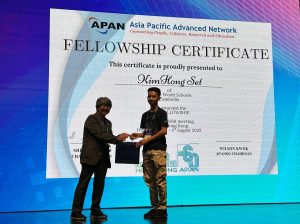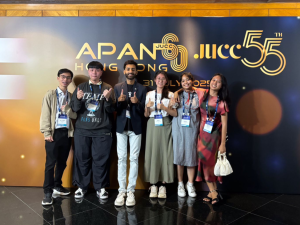Research and education networks in the Asia Pacific collaborated to provide the ‘SuperSpeed’ network required to deliver a world-first interactive live volumetric video performance between Sydney and Tokyo at SIGGRAPH Asia in December 2023.
By capturing and reproducing a three-dimensional representation of the performer, volumetric technology allows the audience to experience the performance in a more immersive and interactive way than a traditional two-dimensional video experience.
This data-intensive interactive volumetric live performance at SIGGRAPH Asia was delivered via research and education network connectivity between Japan and Australia, over a distance of 7,800km.
Volumetric video technology allowed the violinist in Tokyo and the audience in Sydney to co-create improvised music during the performance. The audience in Sydney was able to freely move the viewpoint from the front, side, back or close to the violin and the violinist was able to respond to the audience’s actions to create music.
The performance was streamed in real-time from the Volumetric Video Studio at TOKYO NODE using 57 cameras in an immersive green screen environment. The captured video was converted into a point-cloud and 3D model using sophisticated proprietary technology designed specifically for this type of video.
High-speed and stable transmission of data was vital for the performance experience, and this would have been difficult to achieve using ordinary network circuits. Research and education networks are purpose built for delivering the high bandwidth and headroom required for transmitting huge volumes of data, such as produced by volumetric video technology, and research more broadly.
The SuperSpeed research and education network connectivity between TOKYO NODE and the International Convention Centre Sydney was provided by AARNet (Australia’s Academic and Research Network), ARENA-PAC (Arterial Research and Educational Network in the Asia Pacific operated by the WIDE Project), and GOREX (the Guam Open Research and Education eXchange).
This groundbreaking performance was made possible through collaboration between Keio University Graduate School of Media Design (KMD), Canon Inc., Bascule Inc., and Mori Building Co., Ltd., WIDE Project with the Cyber Civilization Research Center (CCRC) at Keio University, which coordinates the research and education network.
Photo courtesy Keio University Graduate School of Design










